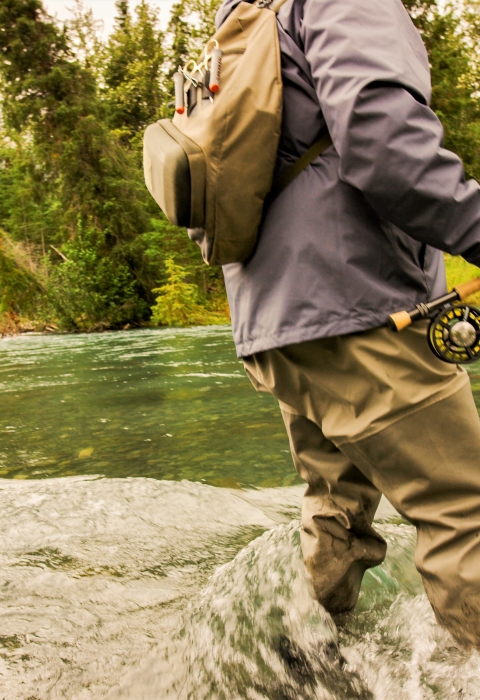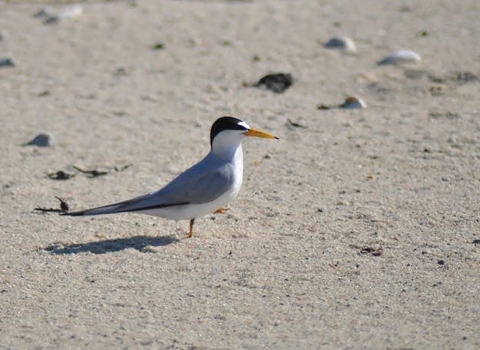WASHINGTON – Continuing his efforts to increase access to public lands, U.S. Secretary of the Interior Ryan Zinke will open more than 251,000 acres to new or expanded hunting and fishing opportunities at 30 national wildlife refuges across the U.S. Fish and Wildlife Service’s National Wildlife Refuge System. This will now bring the number of units where the public may hunt to 377, and the number where fishing is permitted to 312.
This will open more new acres to hunting and fishing than in the past and takes steps to simplify regulations to more closely match state hunting and fishing regulations. The final rule also outlines expanded hunting and fishing opportunities at 136 national wildlife refuges. The changes will be implemented in time for the upcoming 2018-2019 hunting seasons.
“American sportsmen and women contribute over a billion dollars a year to fund conservation. Without hunters and anglers, we wouldn't be able to conserve wildlife and habitat; and, without access to our public lands like national wildlife refuges, many hunters would have nowhere to go,” said Secretary Zinke. “The last thing I want to see is hunting to become an elite sport, rather than a tradition passed on from generation to generation. Today’s announcement protects critical conservation funding, and ensures sportsmen have access to public lands for generations to come.”
Hunting, fishing and other outdoor activities contributed more than $156 billion in economic activity in communities across the United States in 2016 according to the Service’s National Survey of Fishing, Hunting and Wildlife-Associated Recreation, published every five years. More than 101 million Americans – 40 percent of the U.S. population 16 and older – pursue wildlife-related recreation – hunting, fishing and birding among others.
“Hunting and fishing are family activities that pass down from generation to generation. National wildlife refuges provide all Americans with places to hunt, fish, observe the natural world firsthand and experience the great outdoors.” said Cynthia Martinez, Chief of the National Wildlife Refuge System. “We are pleased to be able to offer hunting and fishing opportunities and other recreational activities where they are compatible with national wildlife refuge national wildlife refuge
A national wildlife refuge is typically a contiguous area of land and water managed by the U.S. Fish and Wildlife Service for the conservation and, where appropriate, restoration of fish, wildlife and plant resources and their habitats for the benefit of present and future generations of Americans.
Learn more about national wildlife refuge management goals.”
The Service manages hunting and fishing programs to ensure sustainable wildlife populations while also offering other wildlife-dependent recreation on public lands, such as wildlife watching and photography. The Refuge System is an unparalleled network of 566 national wildlife refuges and 38 wetland management districts. There is a national wildlife refuge within an hour’s drive of most major metropolitan areas.
Hunting and/or fishing will expand or be opened on the following refuges:
Arkansas
- Felsenthal National Wildlife Refuge: Expand existing migratory game bird, upland game and big game hunting.
California
- San Pablo Bay National Wildlife Refuge: Expands existing migratory game bird hunting, and open sport fishing for the first time.
Florida
- Lake Woodruff National Wildlife Refuge: Opens wild turkey hunting for the first time.
Illinois
- Cypress Creek National Wildlife Refuge: Expands existing migratory game bird, upland game and big game hunting.
Illinois and Missouri
- Great River National Wildlife Refuge: Expands existing migratory game bird, upland game and big game hunting.
Illinois and Wisconsin
- Hackmatack National Wildlife Refuge: Opens migratory game bird, upland game and big game hunting to all legal species in the State of Illinois.
Indiana
- Patoka River National Wildlife Refuge: Expands existing migratory game bird, upland game, big game hunting and sport fishing
Maine
- Moosehorn National Wildlife Refuge: Expands existing migratory game bird, upland game and big game hunting.
- Rachel Carson National Wildlife Refuge: Expands existing white-tailed deer and wild turkey hunting.
Maine and New Hampshire
- Umbagog National Wildlife Refuge: Opens wild turkey hunting for the first time, and expand existing migratory game bird, upland game and big game hunting.
Maryland
- Blackwater National Wildlife Refuge: Expands existing migratory game bird and big game hunting.
- Patuxent Research Refuge: Expands existing white-tailed deer and wild turkey hunting.
Michigan
- Shiawassee National Wildlife Refuge: Opens hunting of certain migratory bird, small game, and furbearers, and expand existing migratory game bird and big game hunting.
Minnesota
- Glacial Ridge National Wildlife Refuge: Opens certain gamebird and small mammal hunting for the first time, and expand existing migratory game bird, upland game and big game hunting.
Montana
- Charles M. Russell National Wildlife Refuge: Expands existing big game hunting.
- Swan River National Wildlife Refuge: Opens big game hunting for the first time.
New Jersey
- Edwin B. Forsythe National Wildlife Refuge: Opens wild turkey and squirrel hunting for the first time, and expand existing migratory game bird and big game hunting.
New Jersey and New York
- Wallkill River National Wildlife Refuge: Expands existing migratory game bird hunting and sport fishing.
New Mexico
- Sevilleta National Wildlife Refuge: Opens Eurasian-collared dove and Gambel’s quail hunting, and expand existing migratory game bird hunting.
North Dakota
- J. Clark Salyer National Wildlife Refuge: Opens moose hunting for the first time.
- Lostwood National Wildlife Refuge: Opens moose hunting for the first time.
Ohio
- Cedar Point National Wildlife Refuge: Opens white-tailed deer hunting for the first time.
- Ottawa National Wildlife Refuge: Opens hunting of certain gamebirds, small mammals and furbearers for the first time, and expand existing migratory game bird and big game hunting.
Oregon
- Cold Springs National Wildlife Refuge: Expands existing migratory game bird, upland game and big game hunting.
- Upper Klamath National Wildlife Refuge: Expands existing migratory game bird hunting.
- William L. Finley National Wildlife Refuge: Expands existing sport fishing.
Pennsylvania
- Cherry Valley National Wildlife Refuge: Expands existing migratory game bird, upland game and big game hunting.
- John Heinz National Wildlife Refuge at Tinicum: Opens white-tailed deer hunting for the first time.
Utah
- Bear River Migratory Bird Refuge: Expands existing migratory game bird and upland game hunting.
Wisconsin
- Trempealeau National Wildlife Refuge: Opens hunting of certain gamebirds, small mammals and furbearers for the first time, and expand existing migratory game bird and big game hunting.
More than 53 million Americans visit refuges every year. National wildlife refuges provide vital habitat for thousands of species and access to world-class recreation, from fishing, hunting and boating to nature watching, photography and environmental education. In doing so, they support regional economies to the tune of $2.4 billion dollars per year and support more than 35,000 jobs.
Under the National Wildlife Refuge System Improvement Act of 1997, the Service permits hunting and fishing along with four other types of wildlife-dependent recreation, including wildlife photography, environmental education, wildlife observation and interpretation, when they are compatible with an individual refuge’s purpose and mission. Hunting, within specified limits, is currently permitted on 340 wildlife refuges and 37 wetland management districts. Fishing is currently permitted on 278 wildlife refuges and 34 wetland management districts.


